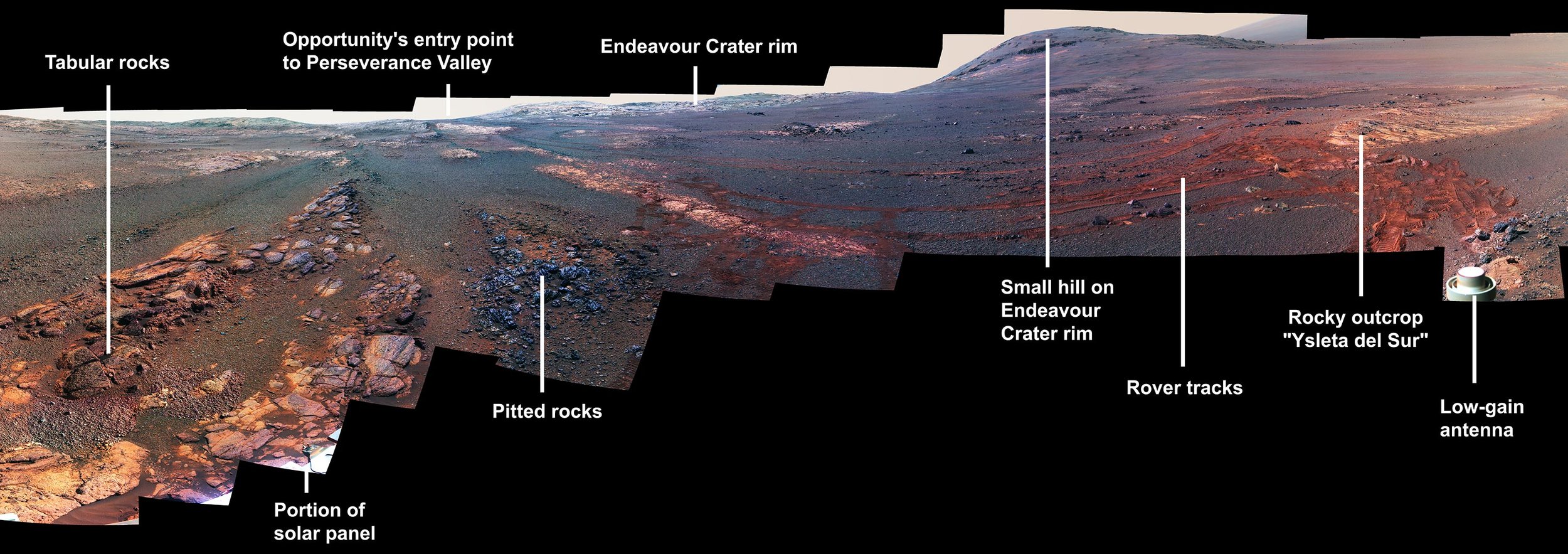The Great Red Spot, a storm larger than the Earth and powerful enough to tear apart smaller storms that get drawn into it, is one of the most recognizable features in Jupiter’s atmosphere and the entire solar system. The counterclockwise-moving storm, an anticyclone, boasts wind speeds as high as 300 miles per hour. This prominent feature, observed since 1830, and possibly as far back as the 1660s, has long been a source of great fascination and scientific study.
SpaceX Tests the Starship’s Hexagonal Heatshield. Starhopper Tests Could Come as Early as This Week!
NASA Mission Reveals Asteroid Has Big Surprises
A NASA spacecraft that will return a sample of a near-Earth asteroid named Bennu to Earth in 2023 made the first-ever close-up observations of particle plumes erupting from an asteroid’s surface. Bennu also revealed itself to be more rugged than expected, challenging the mission team to alter its flight and sample collection plans, due to the rough terrain.
Jupiter or Earth? Which One’s Which, and Why Do They Look so Similar?
NASA's Greenland Mission Still Surprises in Year Four
Only seven months after NASA's Oceans Melting Greenland (OMG) mission wrapped its last field campaign on the world's largest island, an OMG crew is back in Greenland to collect more data. With two or three field projects a year since 2016, no wonder OMG has made the most comprehensive measurements yet of how ocean water lapping at the undersides of Greenland's melting glaciers affects them. All that data has answered a lot of existing questions — and it's raised plenty of new ones.
How H2 becomes ‘molecule that made the universe’
New evidence for a human magnetic sense that lets your brain detect the Earth’s magnetic field
Gravity influences how we make decisions – new research
Brain wave stimulation may improve Alzheimer’s symptoms
Using Black Holes to Conquer Space: The Halo Drive!
The idea of one day traveling to another star system and seeing what is there has been the fevered dream of people long before the first rockets and astronauts were sent to space. But despite all the progress we have made since the beginning of the Space Age, interstellar travel remains just that – a fevered dream. While theoretical concepts have been proposed, the issues of cost, travel time and fuel remain highly problematic.
Researchers reverse the flow of time on IBM’s quantum computer
Quantum simulation gives a sneak peek into the possibilities of time reversal. An international team of scientists led by Argonne explored the concept of reversing time in a first-of-its-kind experiment, managing to return a computer briefly to the past. The results present new possibilities for quantum computer program testing and error correction.
Cooking up Alien Atmospheres on Earth
Researchers at NASA's Jet Propulsion Laboratory in Pasadena, California, are cooking up an alien atmosphere right here on Earth. In a new study, JPL scientists used a high-temperature "oven" to heat a mixture of hydrogen and carbon monoxide to more than 2,000 degrees Fahrenheit (1,100 Celsius), about the temperature of molten lava. The aim was to simulate conditions that might be found in the atmospheres of a special class of exoplanets (planets outside our solar system) called "hot Jupiters."
Chances for life expand when passing stars push binaries together
Planetary systems can be harsh environments in their early history. The young worlds orbit suns in stellar nurseries, clusters of stars where violent encounters are commonplace. None of this makes it easy for life to get going, but now astronomers at the University of Sheffield find one positive of this tumultuous period. A model developed by undergraduate student Bethany Wootton and Royal Society Dorothy Hodgkin Fellow Dr Richard Parker looks at how the habitable zone – the region around a star where the temperature allows liquid water to exist – changes around pairs of stars, so-called binary systems.
This is What It’ll Look Like When the Milky Way and Andromeda Galaxies Collide Billions of Years from Now
How the brain distinguishes between objects
A Cosmic Bat in Flight - ESO’s Cosmic Gems Programme captures the Cosmic Bat’s dusty clouds
Hidden in one of the darkest corners of the Orion constellation, this Cosmic Bat is spreading its hazy wings through interstellar space two thousand light-years away. It is illuminated by the young stars nestled in its core — despite being shrouded by opaque clouds of dust, their bright rays still illuminate the nebula. Too dim to be discerned by the naked eye, NGC 1788 reveals its soft colours to ESO's Very Large Telescope in this image — the most detailed to date.
Softer, processed foods changed the way ancient humans spoke
Opportunity's Parting Shot Was a Beautiful Panorama
Over 29 days last spring, NASA's Mars Exploration Rover Opportunity documented this 360-degree panorama from multiple images taken at what would become its final resting spot in Perseverance Valley. Located on the inner slope of the western rim of Endeavour Crater, Perseverance Valley is a system of shallow troughs descending eastward about the length of two football fields from the crest of Endeavour's rim to its floor.
What Scientists Found After Sifting Through Dust in the Solar System
Just as dust gathers in corners and along bookshelves in our homes, dust piles up in space too. But when the dust settles in the solar system, it’s often in rings. Several dust rings circle the Sun. The rings trace the orbits of planets, whose gravity tugs dust into place around the Sun, as it drifts by on its way to the center of the solar system.
















